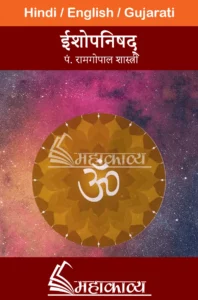Kena Upanishad in English
Kena panishad (Kena Upanishad in English) is an important Upanishad, which comes under the Sama Veda. It is mainly considered to represent the philosophy of Advaita Vedanta. Its name is derived from the word “Kena”, which means “by whom?”. In this Upanishad, there is a deep discussion on the soul, the Supreme Being, and the relationship between them.
Read here in one click ~ Kenopanishad in Hindi
Kena Upanishad (Kena Upanishad in English) is an Upanishad of the Samaveda branch, which is written in the Sanskrit language. Its authors are considered to be the sages of the Vedic period, but mainly Maharishi Ved Vyas Rishi is considered to be the author of the Upanishads. Kenopanishad is a second-order Upanishad among the 10 main Upanishads.
The literal meaning of Kena is the discussion of Ken, that is, by whom, hence it is called Kena Upanishad. Since this Upanishad begins with a question (Who inspires life), this Upanishad is also known as Kenopanishad.
In Kenopanishad, while describing the glory of the all-inspiring Supreme Brahma and the realization of the Supreme Brahman form, it is clearly said that –
Brahma is as easy to say and hear as it is difficult to feel.
Table of Contents
ToggleIntroduction:
Kena Upanishad is found in the 9th chapter of Talvakar Brahman of Samveda. Kenopanishad is divided into 4 sections. In the first and second sections, the inspiring power is described through the tradition of Guru and disciple. In the third and fourth sections, the pride of the gods and the knowledge of “Brahma Tatva” have been fully described. The aim of this Upanishad is to lead all beings towards the path of “Shrey”.
Kenopanishad is a Vedic Upanishad which is included in the Tanhavali series of Vedas. It represents important ancient Indian religions, Vedanta and Tantra.
The topics of Brahma, immensity, infinity, truth, authority and spiritual knowledge are discussed in Kenopanishad.
Importance of Kena Upanishad:
The special importance of Kena Upanishad is evident from the fact that Bhagwan Bhashyakar has written two commentaries on it. Same on same book. It is not often seen that two commentaries have been written by the same author establishing a principle.
Bhagwan Bhashyakar was not satisfied even after explaining the Brahmanopanipada word by word under the Samavedic branch like Kenopanishad, because its meaning was not decided by the methods as per the anatomy, hence now he starts with the desire to explain from the Nyaya based sentences which represent the Shrutyartha.
Read this also
Please wait while flipbook is loading. For more related info, FAQs and issues please refer to DearFlip WordPress Flipbook Plugin Help documentation.




